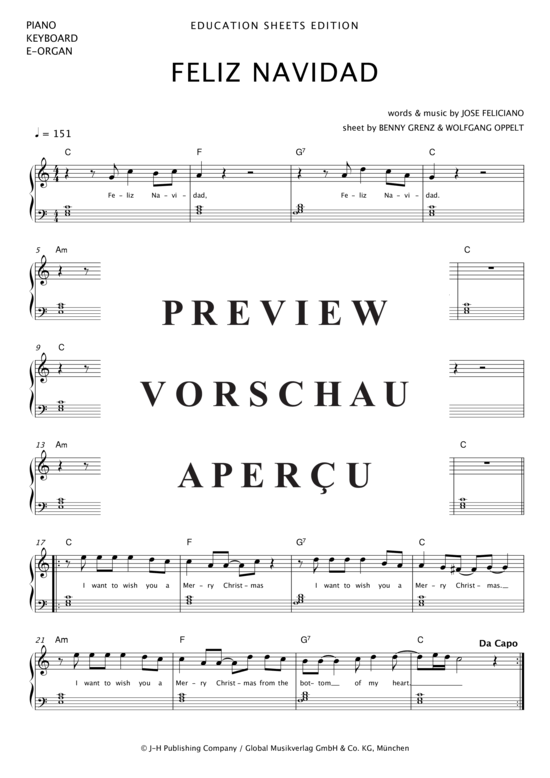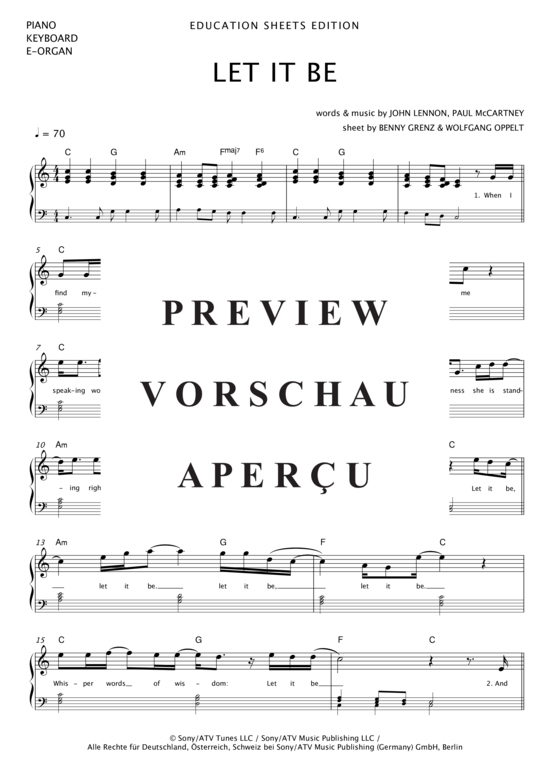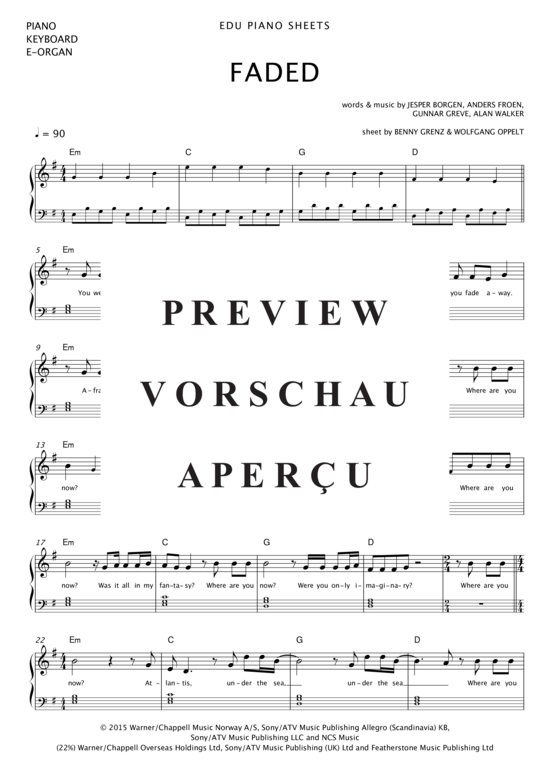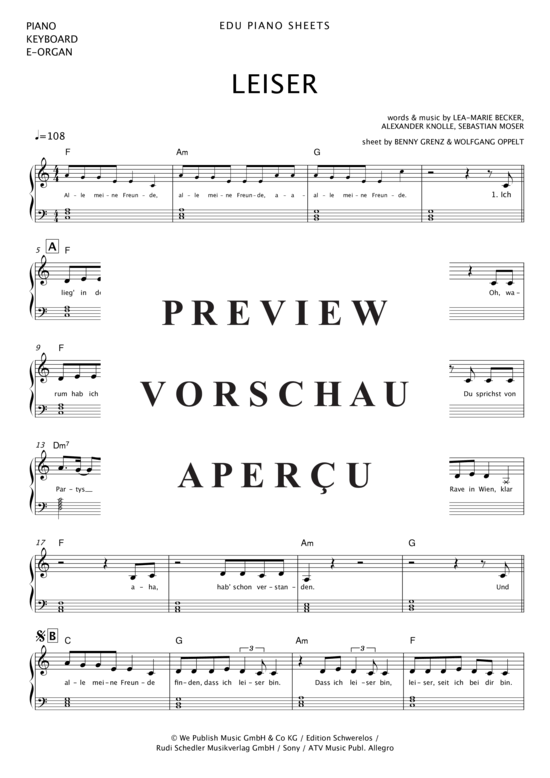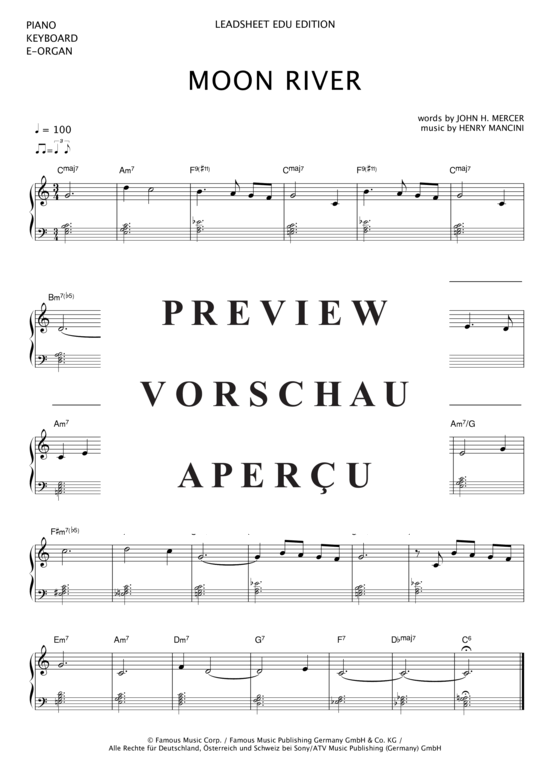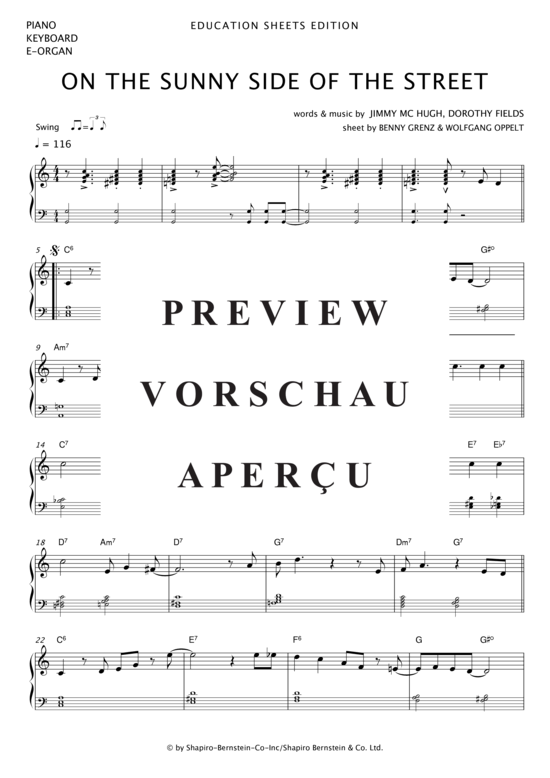EDU Piano Sheets - Sheet Music
As a pianist, you practised for a long time to be able to play pieces from sheet music. Don't you sometimes admire pianists who play, accompany or even improvise freely without sheet music? You too can learn to do this quite easily with the EDU PIANO SHEETS.
Free piano playing with leadsheets
The principle is very simple and is based on the so-called "lead sheets" that have proven themselves in jazz and pop music for decades. The "Real Books" are compilations of lead sheets for the best-known standards in pop and jazz. Only chord symbols are given for the left hand. You will learn how to work with them with the EDU Piano Sheets.
Step 1 - How do I get started with free piano playing?
The melody line is always notated in the usual musical notation. It is first rehearsed with the right hand. It is best to listen to the song several times beforehand and sing along, even if you are not a singer. This will give you a feel for the rhythmic phrasing and the interval leaps of the melody. This will make rehearsing much easier.
Step 2 - Give your left hand its first freedom!
The next step is to learn to play the piano by chords. Both the chord symbols (e.g. Em for E minor) and the chords are notated in musical notation. As a beginner, you first play with your left hand according to the notes. In addition to the basic position, the inversions are also used for the chords so that you can finger them more easily. With a little practice, you will no longer need the notes later on and can play freely using chord symbols. The more chords you learn, the better you will get at playing free accompaniment.
Step 3 - It's all about "phrasing"...
But how are the chords phrased rhythmically? Here too, the EDU PIANO SHEETS help with different versions in the notes of the left hand. Initially, it is sufficient to press the correct chord on the "one" until the next bar or the next chord change. In slow pieces, you can also hit the "three" or every crotchet. Later, you can also break up the chords into arpeggios, depending on the character of the song. You can also find the different variations in the EDU PIANO SHEETS.

 Payment methods
Payment methods




























